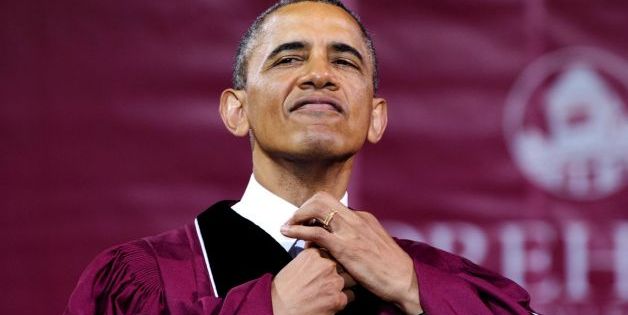The Federal Government makes vast profits, while crippling student borrowers chasing their higher education dreams.
So just how vast is this profit that the government makes from student borrowers?
Well, in the 2013 fiscal year alone, the Government cleared $41.3 billion in profit from its student loans.
To put this in perspective, imagine that if the federal government were a private lender, it would be one of the three most profitable companies in THE WORLD, next to Exxon Mobile and Apple.
So the government is profiting from the student loans, while crippling an entire generation that can’t afford to skip college, but can’t afford to pay for it either.
Student loans debt is killing the higher education dream.
As an example, here’s the case of a student borrower named Roshan Bliss.
Roshan owes nearly $80,000 for a degree he never received. A Master’s degree candidate at the University of Denver, he dropped out two-thirds of the way through.
“I already owed more than $70,000 in student loans,” he said during an interview with a newspaper.
“I did the math and figured out I would still have to take out another $30,000 for tuition and more for living expenses. It just wasn’t worth it.”
The interest rate for his loans is set at 6.8 percent and that goes directly to the federal government, which has administered student loans since 2010. Some — including Bliss — accuse the government of taking in billions of dollars in “profit” from students who much go into debt to finance their education.
The student and the Great Recession
Bliss had managed to keep his loans in check during his undergraduate experience at Purdue University. He had received a full-tuition scholarship and worked part-time for the full four years to pay most of his other expenses. Yet he still graduated with $13,000 in debt.
That was in 2009, just a year into the Great Recession. Recent graduates like Bliss were entering a workforce without jobs for them.
“Everyone always told me study what you love and you’ll never work another day in your life,” Bliss said. However, “Starting my career at the height of job loss in the economy, no one was saying, ‘Wow, we really need someone with a philosophy degree.’”
Without work, he heeded advice to go to graduate school and wait out the recession. By the time he finished, the logic went, there would be more jobs. Getting a partial scholarship to University of Denver, he “saw all these zeroes” and came to the conclusion “I can’t afford not to go.”
So Bliss decided that he would get actual job skills and started a program in conflict negotiation. “I’m a trained mediator now,” he said with a mix of pride and pessimism.
It soon became clear he probably wouldn’t find a job, even with the new degree, so he dropped out to cut his losses and now blogs part-time and works as an organizer who advocates for eliminating college debt. His income is so low that he isn’t required to pay any of his loans back yet. In the meantime, however, the interest on his loans will continue to accrue — that’s already added several thousand dollars to what owes to the U.S. federal government since quitting the program.
Bliss is far from alone. He’s among the 37 million other Americans who have close to $1.2 trillion in unpaid aggregate student debt. The average student debt holder owes about $33,000.
Student loan debt cripples not only the student borrower, but an entire society. Today people are struggling to do basic things like buy a home or buy a car. Some are impacted even greater in terms of credit, and some put off getting married and starting families, which in turns affects the overall economy.
In a press conference last year, Secretary of Education Arne Duncan argued that categorizing student loan interest as a “profit” is a mischaracterization, noting that the funds go toward subsidizing other education programs. Yet little of that revenue benefits the people who spend decades paying off their college tuition.
Students are charged 6.8 percent interest for unsubsidized loans, which constitute most loans. Parents who take out loans to pay for some of their childrens’ education pay 7.2 percent. Last year, the interest rate cap on federally-subsidized student loans was set to expire. Long set at 3.4 percent, the expiration of the law that set the cap meant the interest rate would jump to 6.8 percent — the same as the rate on unsubsidized loans.
However, outcry resulted in Congress settling on a market-based interest rate, which varies year to year with the market but is fixed for the life of the loan. A student matriculating this fall would be taking subsidized loans with interest rates of 4.66 percent and that rate will remain in place through 2015.

